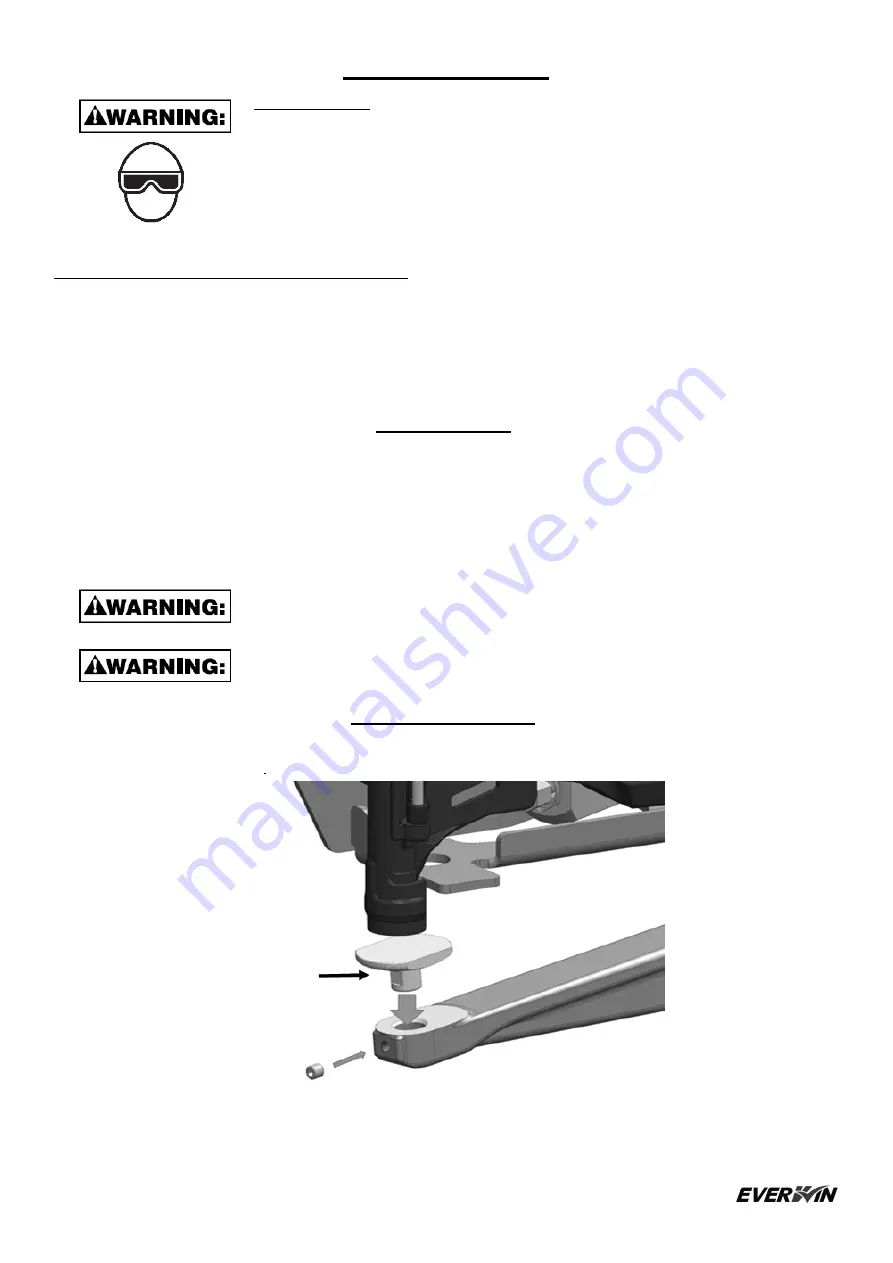
10
TOOL OPERATION
EYE PROTECTION which conforms to ANSI/ CE specifications and provides protection against
flying particles both from the FRONT and SIDE should ALWAYS be worn by the operator and others
in the work area when connecting to air supply, loading, operating or servicing this tool. Eye
protection is required to guard against flying fasteners and debris, which could cause severe eye
injury.
The employer and/or user must ensure that proper eye protection is worn. Eye protection
equipment must conform to the requirements of the ANSI Z87.1 and 89/686/EEC, and provide both
frontal and side protection. NOTE: Non-side shielded spectacles and face shields alone do not
provide adequate protection.
BEFORE HANDLING OR OPERATING THIS TOOL:
l
READ AND UNDERSTAND THE WARNINGS CONTAINED IN THIS MANUAL.
l
REFER TO “TOOL SPECIFICATIONS” IN THIS MANUAL TO IDENTIFY THE OPERATING SYSTEM ON YOUR
TOOL.
OPERATION
The common operating procedure on tools is for the operator to place Contact Trip to
the Work Piece surface and depress Secondary Trigger, then pull the trigger to close
Anvil and drive a fastener each time when trigger is pulled.
Release trigger and secondary trigger, so the tool can be shifted to another position.
Repeat the above sequences to driver fasteners.
The operator must not hold the trigger on contact trip tools except during
fastening operation, as serious injury could result if the trip accidentally
contacts someone or something, causing the tool to cycle.
Keep hands and body away from the discharge area of the tool. A contact trip
tool may bounce from the recoil of driving a fastener and an unwanted second
fastener may be driven, possibly causing injury.
REPLACE ANVIL
Please be advised that the Anvil is replaceable, please see the explanation below.
Flat surface
face front
Add Loctite 243 or equivalent to
bolt before assembly






























